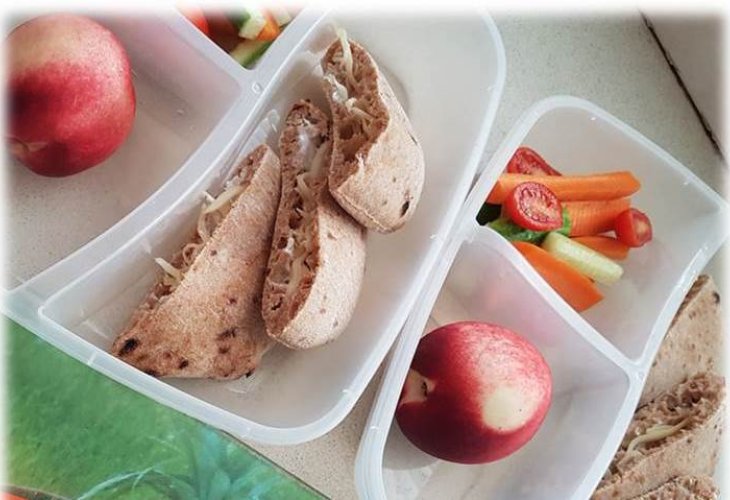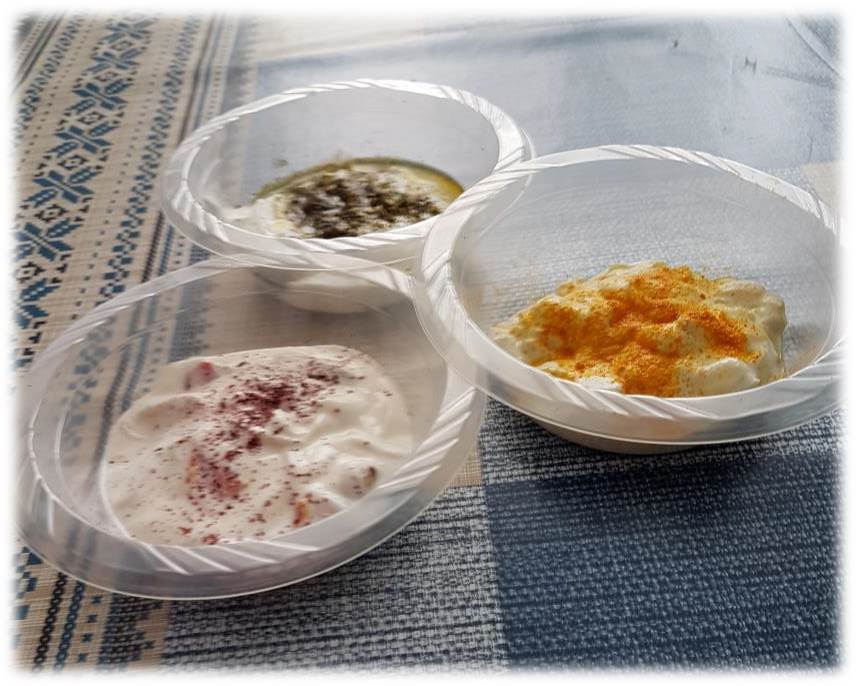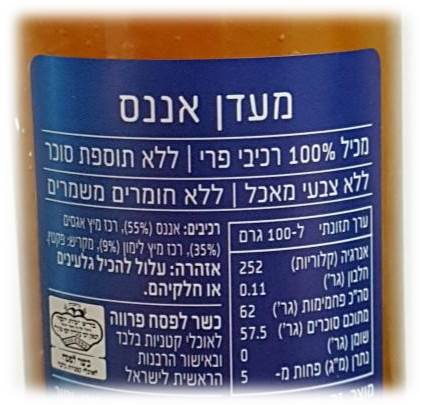Morning Energy: What to Put in Your Kids' Sandwiches
This time: discover some tasty and healthy spread ideas perfect for kids' sandwiches, ensuring a successful day at school or kindergarten.

I love waking up early, when the house is still asleep.
There's a different kind of energy in the air.
A calm energy,
a serene energy.
An hour later, something shifts, and suddenly there’s a vibe of action and hustle.
So when the energy is still calm, I like to get myself organized and prepare food for the rest of the family.
Just before the morning blessings, I take the spelt pitas out of the freezer and lay them on the counter to defrost.
They thaw quickly at room temperature, and by the time I finish my Shmone Esrei prayer, the pitas are soft as if they were freshly baked.
I strive for variety, putting something different in the sandwich every day.
I also add cut vegetables on the side – not inside the bread.
When vegetables are ready to eat and nicely cut, few children will refuse them.
I challenge you to try an experiment – send your kids tomorrow with a box of neatly cut vegetables next to their sandwich and see how the box returns empty.
Halved cherry tomatoes, cucumber sticks, carrots or kohlrabi.
You can also offer fruits; slices of apple, peach, or melon cubes.
Everything goes.
Just please, do not peel the skin.
The skin is rich in fibers, vitamins, minerals, and antioxidants.
It's truly wasteful to throw all that goodness away.
Meanwhile, the house starts to wake up. Everyone gets ready, says goodbye, and heads to their own daily routines.
The bell rings.
It’s lunchtime.
Each child takes out the sandwich mom prepared from their backpack.
Within that lunchbox is more than just a sandwich – it carries mom’s care and love.
"Even when mom is not with me, she's thinking about me; I matter to her; she cares for me; she nourishes me."
I deeply believe in the message beyond words.
It’s said that over 90% of our interpersonal communication is non-verbal communication.
There's a story about an English lord from a town called Sandwich in Kent.
That English lord, John Montagu, loved his card games so much he wasn't willing to stop for lunch.
So his servants found a way to feed their master – they placed his lunch in between two slices of bread, and that's how John Montagu, Earl of Sandwich (or Sandwich), had his meal.
That's where the term for this meal eaten without cutlery between two slices of bread originated.
So, what do we put in the sandwich?
We want to choose something that’s nutritious, satisfying, and leaves the lunchbox empty when the child returns home.
Every mom knows her kids and their preferences.
It's great to mix it up and send something different every day.
- Avocado – the good fat.
Rich in excellent nutrients that we really need:
High in dietary fiber, rich in minerals – mainly calcium, magnesium, zinc, iron, and potassium, rich in omega-9 fatty acids that are very essential for us, rich in B vitamins needed for the nervous system, vitamin A which strengthens vision, vitamin C, vitamin K, and even vitamin E, an excellent antioxidant against free radicals (I hope to write an extended article on this soon). - Hummus Spread – the healthy protein
Hummus is rich in protein, especially in certain amino acids that contribute to a sense of calm and increased concentration.
Hummus is also rich in the vitamins and minerals we need.
But not the kind you buy at the store with all the preservatives and bad additives.
Homemade hummus, like the old days.
I've tried countless versions of hummus until I reached the perfect recipe.
Soaked overnight with a baking soda, blended with a hard-boiled egg, tried frozen chickpeas, you name it... but in the end, perseverance triumphed, and I reached a marvelous hummus recipe; everyone who tastes it asks for the recipe.
A great solution for a school sandwich, and even better as one of the salads adorning the Shabbat kodesh table (stay tuned for a whole article just on tempting and tasty health salads for the Shabbat table).
Since we add tahini to the hummus salad, we get a complete plant-based protein.
Dear sisters – a gift from me, a winning hummus spread recipe.
Make sure to keep it.
The first ingredient will surely surprise most of you: canned chickpeas – I don't know how to explain it, but canned chickpeas make the best-tasting spread.
A personal confession – at the beginning of my natural nutrition journey, I was a bit fanatical (to put it mildly).
The mention of canned goods was like a curse word to me.
It represented the peak of the flawed food industry for me.
Today, I realize this came from ignorance.
It reminds me of the beginning of my journey when I returned to religious observance; everything was extreme. Slowly, as I learned and understood, I began to moderate.
I am more relaxed now regarding healthy nutrition and have learned where to insist and where it is even worth compromising.
So it's perfectly fine to buy canned goods, corn, maternal formula (or Similac, etc.), peas, and yes, also chickpeas.
As long as the can is intact and hasn’t dented or bulged, there’s no problem with it.
Of course, choose one without preservatives. Just chickpeas, salt, and water.
There’s no need for a preservative, thanks to a special preservation method based on food sterilization, similar to dairy pasteurization.
Here's the recipe:
In a food processor, place canned chickpeas with a bit of the liquid, add 5 tablespoons of raw tahini (preferably sprouted Ethiopian), 2 cloves of garlic, half a squeezed lemon, salt, and cumin to taste.
Blend and taste.
If it's too thick, you can add more of the chickpea can's liquid.
If it's too runny, you can add more raw tahini.
As simple as it is to make, the taste is amazing.
Beware – it's addictive.
- Flavored Tahini and Halva Spread
Raw tahini is rich in calcium.
The Ethiopian tahini made from sprouted sesame is best because it has significantly more nutritional value. Ethiopians really know their healthy food.
Mix it with water, salt, lemon, and crushed garlic for a classic tahini spread.
You can blend the classic spread with coriander and parsley for a green tahini.
But my kids love it when I mix raw tahini with honey, and it turns into a sweet, tasty, and healthy halva spread.
Sometimes, I add carob powder to this homemade halva spread, and we get a chocolate-flavored spread rich in calcium. ![]()
- White Cheese
My eldest likes the cheese just as it is – no enhancements.
But Noa Uliel, my naturopathic nutrition lecturer, gave me great tips to upgrade the cheese – and my daughters were really excited.
A bit of roasted small sweet peppers in the oven, diced, can be mixed into the cheese along with some sumac spice.
You can mix the cheese with za'atar and olive oil.
Slightly sauté onions in olive oil, add turmeric, mix with the cheese, and get cheese with a smoky onion taste.
Mix cheese with basil and finely chopped pine nuts – and there’s our pesto cheese.
Endless possibilities.
Cheese is a great source of calcium; but, cheese also contains sodium that might interfere with calcium absorption.
Therefore, when buying cheese, be sure to read the nutritional label and choose the one with the least sodium.
Of course, cheese is also rich in proteins. Proteins are the body's building blocks, so they're especially important for children. - Peanut Butter and Jelly
Just like in America.
Americans love peanut butter so much they've even declared January 24th as National Peanut Butter Day.
Two tablespoons of peanut butter contain 7 grams of protein – a respectable amount of protein.
Peanut butter also contains a lot of resveratrol – a very vital compound that helps with numerous body processes. Among other things, it helps fight infections, bacteria, and fungi.
We, of course, will choose peanut butter that contains only peanuts.
Pure peanuts – no added sugar, salt, flavors, and certainly no preservatives.
Jelly:
Either homemade jelly that we make at home.
Or fruit spread, which is jelly containing only fruit and/or fruit concentrate and added pectin – no sugars, preservatives, etc.
Pectin is the substance found in fruits like apple peels, creating the jelly texture in jams. ![]()
- Almond Butter
Almond paste made from 100% almonds.
Naturally sweet and delicious.
Rich in protein, rich in iron, calcium, magnesium.
Rich in B vitamins.
Almonds are so nutrient-rich, I highly recommend incorporating them not only in the children's diet but for the whole family.
Do you have more ideas?
What good and healthy spreads do you put in your kids' sandwiches?
Feel free to share with me and other readers in the comments below.
Regarding comments on the previous article,
First, I want to thank each and every one of you again and again for the kind and encouraging words. You warmed my heart, you wonderful and dear women, may Hashem keep you and your families and grant all your heart's desires for good.
A huge thank you also for the amazing tips and excellent recipes you shared in the comments:
Orange-coconut cake (I tried it and it was simply a delight), an idea for maple-nut cake, a recipe for spelt buns which can definitely serve as an excellent breakfast, and great tips on how to save on oil.
Ashreichem – from all my mentors I have learned.
There were some comments from dear readers who didn’t see the quantities, while for other readers they did appear.
It might be a formatting issue on the computer/mobile phone? Maybe the edges are cut off, so the quantity doesn’t appear?
I would appreciate it if you check the article again from another device and update me if the quantities show there. I truly hope the issue gets resolved, it's really a great recipe for a great cake.
To the dear reader who requested examples of products – kudos! In my initial articles, I included pictures and brand names of recommended products along with explanations on how to choose.
Here are links to some of the articles:
https://www.hidabroot.org/article/225230
https://www.hidabroot.org/article/225840
https://www.hidabroot.org/article/226076
Regarding questions on kashrut – I generally consult the rabbi in my community, and it's best for everyone to choose their own rabbi.
But sometimes an immediate answer is needed, and in such a case, I recommend joining "Rav on the Line" via the "WhatsApp" app of the Nezer Cohen Association headed by Rabbi Zamir Cohen Shlita,
phone 054-7489177
Their rabbi team simply does holy work. Available 24 hours a day, 6 days a week, with such respect and patience beyond this world.
I think we've thoroughly covered carbohydrates and breakfast.
With Hashem's help, in upcoming articles, we'll discuss proteins and lunch.
Until then, wishing you lots of health,
Chen Tovi



